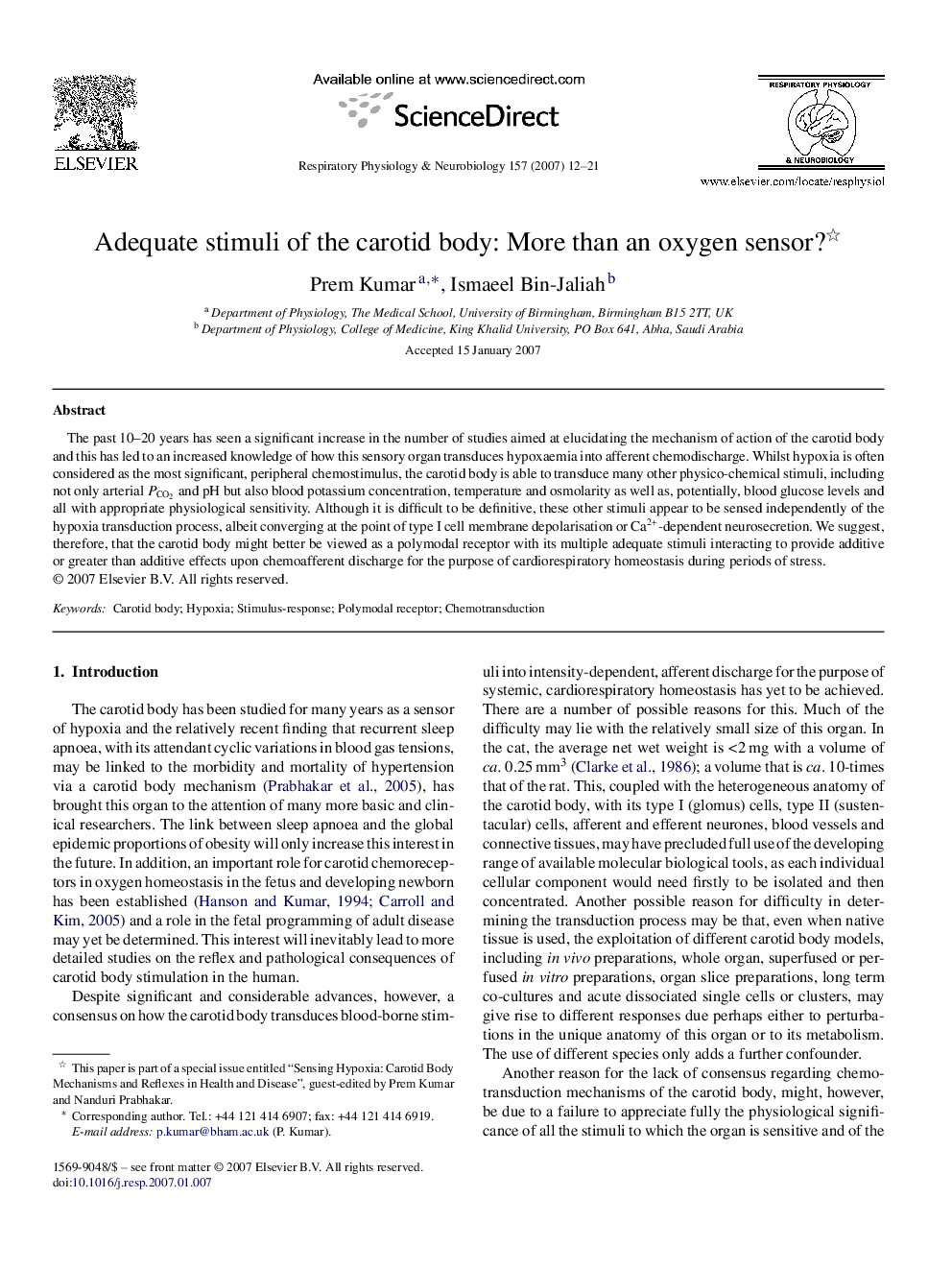| Article ID | Journal | Published Year | Pages | File Type |
|---|---|---|---|---|
| 2848465 | Respiratory Physiology & Neurobiology | 2007 | 10 Pages |
The past 10–20 years has seen a significant increase in the number of studies aimed at elucidating the mechanism of action of the carotid body and this has led to an increased knowledge of how this sensory organ transduces hypoxaemia into afferent chemodischarge. Whilst hypoxia is often considered as the most significant, peripheral chemostimulus, the carotid body is able to transduce many other physico-chemical stimuli, including not only arterial PCO2PCO2 and pH but also blood potassium concentration, temperature and osmolarity as well as, potentially, blood glucose levels and all with appropriate physiological sensitivity. Although it is difficult to be definitive, these other stimuli appear to be sensed independently of the hypoxia transduction process, albeit converging at the point of type I cell membrane depolarisation or Ca2+-dependent neurosecretion. We suggest, therefore, that the carotid body might better be viewed as a polymodal receptor with its multiple adequate stimuli interacting to provide additive or greater than additive effects upon chemoafferent discharge for the purpose of cardiorespiratory homeostasis during periods of stress.
